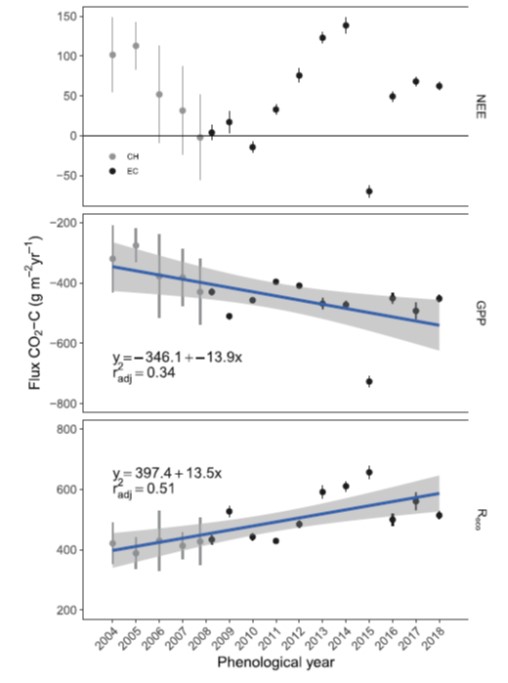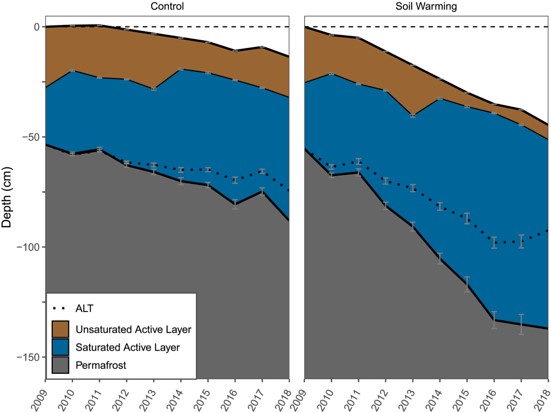We measure a wide variety of environmental, biogeochemical, and geospatial variables at our research sites. Data collection started in 2004 and ranges from high frequency measurements (30 minutes) to seasonal (Growing/Non-growing season) depending on the variable. Our data are publicly available at Bonanza Creek LTER (2004 – present) and AmeriFlux (Eddy Covariance; 2008 - present) repositories.
The simplest way access data from LTER is to use their online catalog and search for Study Site “EML” or Creator “Ted Schuur”. In AmeriFlix our site is “US-EML”.
Here are some examples for the type of data we collect and analyze:
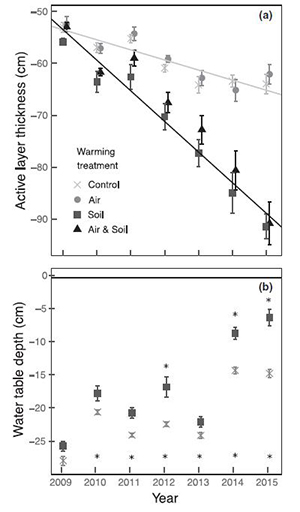 |
From Schuur et al. 2021 Tundra Underlain By Thawing Permafrost Persistently Emits Carbon to the Atmosphere Over 15 Years of Measurements. Journal of Geophysical Research: Biogeosciences. Measurements at Eight Mile Lake near Healy, AK quantify that plant productivity and ecosystem respiration have each increased over the last 15 years as the Arctic has warmed. Respiration is increasing more quickly than productivity, so the site is becoming a larger source of carbon emission. This effect is called the carbon feedback loop |
Reproduced from Mauritz, et al. 2017 Non-linear CO2 flux response to seven years of experimentally induced permafrost thaw. Global Change Biology. Winter-warmed and control plots of Alaskan permafrost have increased active layer thickness over the course of seven years of manipulation. Warmed plots have a significantly greater deepening of ALT than control plots. Water table depth varies by year due to environmental factors, warmed plots are observed to be wetter than control plots. |
|
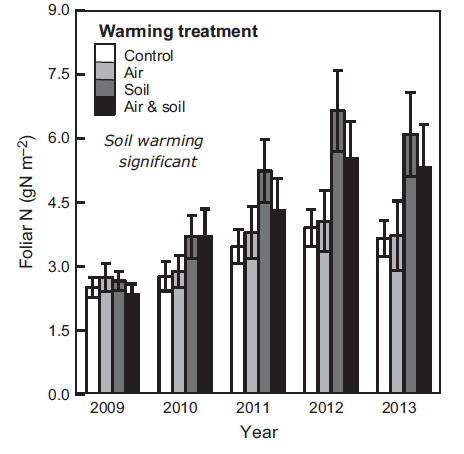 |
|
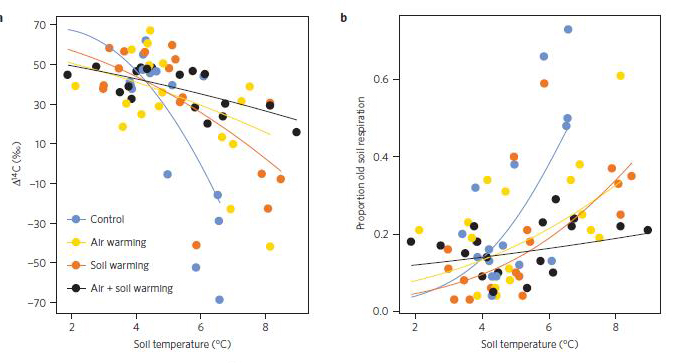 |
|
From Hicks Pries, et al. 2016 Old soil carbon losses increase with ecosystem respiration in experimentally thawed tundra. Nature Climate Change. Radiocarbon (14C) is used to observe the age of respired carbon; old carbon is a particular concern because if older and deeper carbon is released from permafrost it will accelerate the increase in atmospheric carbon. Rising soil temperatures cause an increase in the age of respired carbon.
|
From Salmon, et al. 2016 Nitrogen availability increases in a tundra ecosystem during five years of experimental permafrost thaw. Global Change Biology, 2016. Winter-warmed permafrost show an increase in foliar nitrogen, demonstrating an increase in nitrogen availability compared to control plots. |
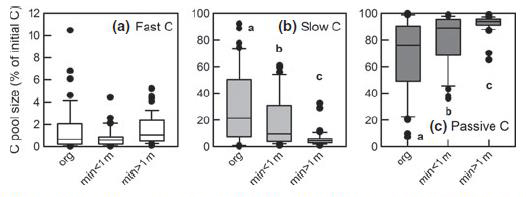 |
From Schädel, et al. 2014 Circumpolar assessment of permafrost C quality and its vulnerability over time using long-term incubation data. Global Change Biology, 2014. Incubation of arctic permafrost soils exhibited carbon of three qualities: fast-degrading carbon, slow-degrading carbon, and passive carbon with extremely long turnover time. The decomposability of once-frozen carbon has a great impact on carbon feedback and the global carbon system. |
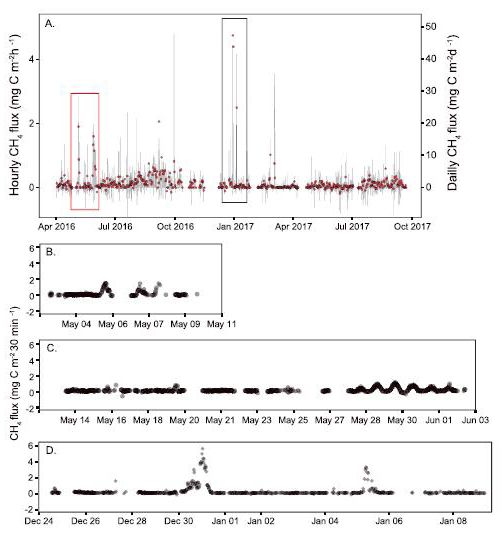 |
From Taylor, et al. 2018 Methane efflux measured by eddy covariance in Alaska upland tundra undergoing permafrost degradation. Journal of Geophysical Research, 2018. Methane emission from arctic tundra amplifies climate change, because sustained methane emissions have 45 time the radiative forcing of carbon dioxide over a hundred-year timescale. Methane release was prevalent all year. Winter and shoulder-season methane release was characterized by large pulses of emission brought about by sudden increases in air and shallow soil temperatures. |
|
From Rodenhizer, et al. 2020 Carbon Thaw Rate Doubles When Accounting for Subsidence in a Permafrost Warming Experiment. Journal of Geophysical Research: Biogeosciences, 2020. At our field site we observe permafrost thaw is exacerbated by subsidence: The ground collapses after ice melts and the water drains from the landscape. Rodenhizer et al. prove that measurements which account for subsidence find a greater volume of permafrost soil is vulnerable to carbon loss compared to measurements of Active Layer Thickness alone.
|













